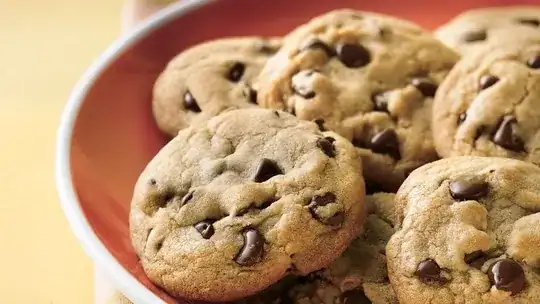I'm making chocolate chip cookies. Am I doing something wrong if my cookies look flat on top, and soft, and brown on the bottom. They're soft on top and are crunchier at the bottom. They taste fully cooked and good, but not exactly like cookies should right? Am I undercooking them or preparing them a wrong way? Or is this normal?
Here's the recipe I used, and the picture that's on the page.
Ingredients:
1 1/4 cups granulated sugar
1 1/4 cups packed brown sugar
1 1/2 cups butter or margarine, softened
2 teaspoons vanilla
3 eggs
4 1/4 cups all-purpose flour
2 teaspoons baking soda
1/2 teaspoon salt
1 to 2 bags (12 oz each) semisweet chocolate chips (2 to 4 cups)
Directions:
- Heat oven to 375°F. In large bowl with electric mixer, beat granulated sugar, brown sugar and butter until light and fluffy. Beat in vanilla and eggs until well blended. Beat in flour, baking soda and salt. Stir in chocolate chips.
- On ungreased cookie sheets, drop dough by rounded tablespoonfuls 2 inches apart.
- Bake 8 to 10 minutes or until light golden brown. Cool 1 minute; remove from cookie sheets to cooling racks.
